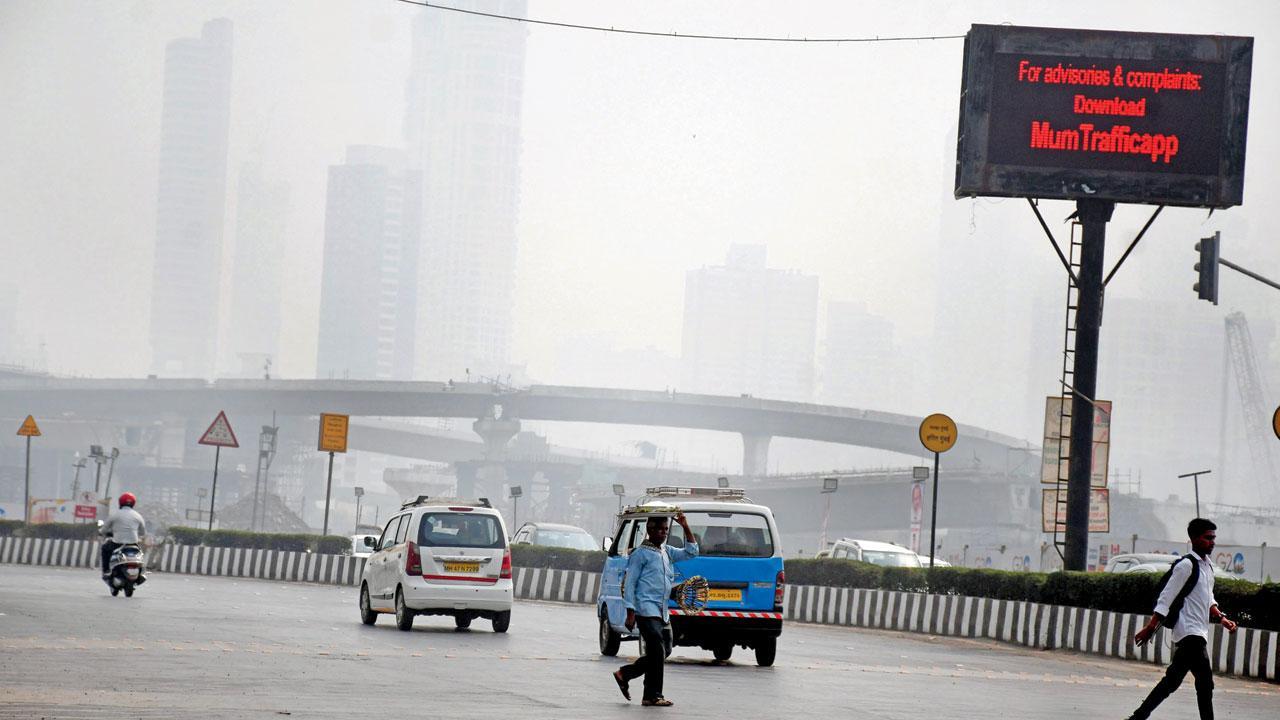Term plan to set up air purifiers across city unfeasible, ineffective, waste of taxpayers’ money

A high-rise in Tardeo is obscured by a shroud of smog at Worli on March 5. File Pic/Ashish Raje
In a bid to mitigate the city’s air pollution woes, the BMC, as part of its 2023 budget, announced the installation of two smog towers each in seven zones in Mumbai. Experts and health professionals, however, have termed these towers a waste of taxpayers’ money. Clean Air Mumbai, a network of citizens and Civil Society Organisations (CSOs), organised a plenary discussion on smog towers on Thursday to understand the implication of such decisions taken through a scientific lens and their efficacy.
ADVERTISEMENT
The speakers at the session were Dr K V George, senior principal scientist and head, Air Pollution Control Division, NEERI; Dr Abhijit Chatterjee, associate professor, Bose Institute, department of science and technology; and Dr Harshal Salve, additional professor, AIIMS and coordinator, CAPHER (Collaborative for Air Pollution and Health effects Research, India) Dr Chatterjee said, “A smog tower is often advertised as a vaccination for ambient or outdoor air pollution. It is used widely for purifying indoor air. It can work indoors where the scope is minimal; however, installing it for the whole city is not feasible.”
Smog towers are structures that function as massive air cleaners. They typically have numerous layers of air filters that screen out air pollutants. Polluted air is drawn in at the height of 24 metres and filtered air is released at the base of the tower, roughly 10 metres above the ground, using a ‘downdraft air cleaning system’. They may offer short-term respite from air pollution in an area, but Dr Salve termed them ‘expensive band-aid solutions’.
Also read: Mumbai: Why did BMC stop washing roads after G20, ask activists
He added, “Smog towers have significant limitations. They are expensive and fail to impact air pollution exposure. I don’t think they will be useful in addressing the air pollution problem at its core. We really need to address the emission source rather than trying to capture emissions in the air. This is applicable to smog towers or air purifiers. We really have to see its cost-effectiveness in terms of how much we are investing and how much we are gaining out of it. This intervention is ranked at a lower level than others. Also, there is a need to focus on scaling up the local air quality monitoring in Mumbai to formulate local solutions.”
Dr K V George added, “The concept of smog towers arose after other countries proposed a comparable solution and we realised we needed to be bigger than that. Even if the towers operate at more than 100 per cent efficiency, they cannot purify the ambient air due to their scale. These solutions should not be promoted since they serve no purpose but to demonstrate concern rather than solve the problem.
The discussions on efficacy should happen prior to the installation of such an anti-smog tower and not after its installation. On the question of whether these towers work: They definitely work as they use energy and are designed for it. The question is, whether our objective is to make the towers work or to clean the environment. Do the towers work? Yes, but do they clean the environment? No.” The lesson for the BMC comes from an analogy that Dr Chatterjee used in concluding the session: “If your roof is broken, and it’s raining, don’t get a bucket; instead, repair the roof.”
 Subscribe today by clicking the link and stay updated with the latest news!" Click here!
Subscribe today by clicking the link and stay updated with the latest news!" Click here!







